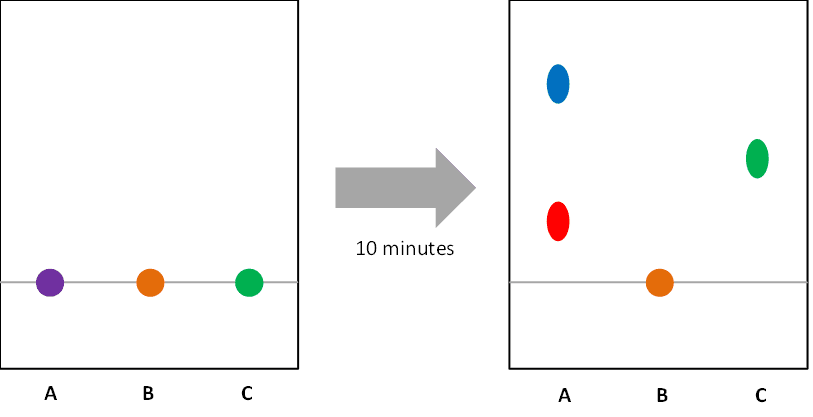Myths about teaching can hold you back
- Year 7
Chromatography
I can describe how chromatography works and use a chromatogram to answer questions about a substance.
- Year 7
Chromatography
I can describe how chromatography works and use a chromatogram to answer questions about a substance.
These resources were made for remote use during the pandemic, not classroom teaching.
Switch to our new teaching resources now - designed by teachers and leading subject experts, and tested in classrooms.
Lesson details
Key learning points
- Chromatography can be used for both separation of minute samples and analysis.
- A pure substance will only produce one spot on a chromatogram.
- A mixture will produce many spots on a chromatogram.
- Comparing chromatograms can help to identify an unknown component in a sample.
- Pencil is insoluble in water.
Keywords
Solvent - A solvent is a liquid into which a solute dissolves.
Soluble - When a substance dissolves in a liquid, it is described as soluble in that liquid.
Chromatography - Chromatography is a technique that separates a mixture into its different parts and the results can be analysed.
Chromatogram - A chromatogram is the resultant pattern on the stationary phase after chromatography has been carried out.
Compare - To compare is to look for similarities and/or differences between two objects or ideas.
Common misconception
Pupils can struggle to interpret information that contain several samples on one chromatogram.
Stress a systematic approach to interpreting chromatograms - use rulers. Live model this - using a visualiser helps enormously.
To help you plan your year 7 science lesson on: Chromatography, download all teaching resources for free and adapt to suit your pupils' needs...
To help you plan your year 7 science lesson on: Chromatography, download all teaching resources for free and adapt to suit your pupils' needs.
The starter quiz will activate and check your pupils' prior knowledge, with versions available both with and without answers in PDF format.
We use learning cycles to break down learning into key concepts or ideas linked to the learning outcome. Each learning cycle features explanations with checks for understanding and practice tasks with feedback. All of this is found in our slide decks, ready for you to download and edit. The practice tasks are also available as printable worksheets and some lessons have additional materials with extra material you might need for teaching the lesson.
The assessment exit quiz will test your pupils' understanding of the key learning points.
Our video is a tool for planning, showing how other teachers might teach the lesson, offering helpful tips, modelled explanations and inspiration for your own delivery in the classroom. Plus, you can set it as homework or revision for pupils and keep their learning on track by sharing an online pupil version of this lesson.
Explore more key stage 3 science lessons from the Separation techniques unit, dive into the full secondary science curriculum, or learn more about lesson planning.

Equipment
Content guidance
- Risk assessment required - equipment
Supervision
Adult supervision required
Licence
Prior knowledge starter quiz
6 Questions
Q1.If you have a mixture of sand and salt, adding water will dissolve the salt. What will happen to the sand?
Q2.A substance that dissolves in a solvent is said to be in that solvent.
Q3.Match the word with the definition.
Ability of a substance to take in another substance.
A substance that can dissolve in a liquid.
A liquid in which a solute dissolves.
A substance which will be tested in an investigation.
Ability of a liquid to dissolve/mix in another liquid.
Q4.Order the following steps describing how to make a solution.
Q5.Oil and water are two liquids that cannot mix. They are said to be ...
Q6.Which of the following substances are mixtures?
Assessment exit quiz
6 Questions
Q1.What is chromatography used for?
Q2.The pattern of results obtained from chromatography is called a ...
Q3.How does a pure substance behave in chromatography?
Q4.The line on the chromatogram on which the samples are placed must be drawn in pencil because it is in the solvent.
Q5.Order these steps in performing chromatography, starting with drawing a pencil line.
Q6.What can you conclude from this chromatogram?



